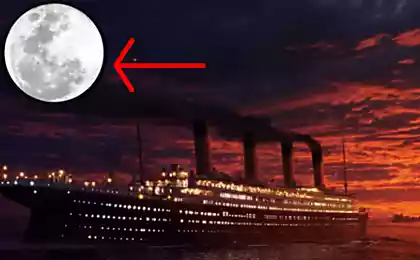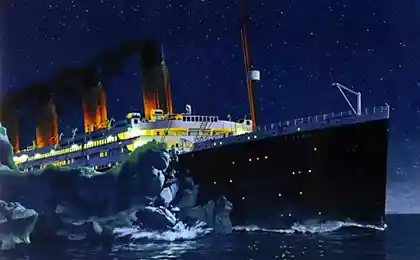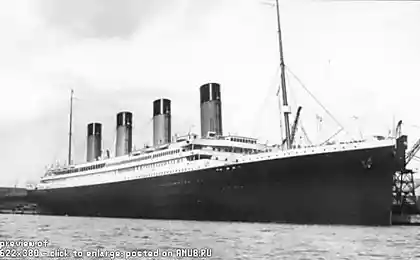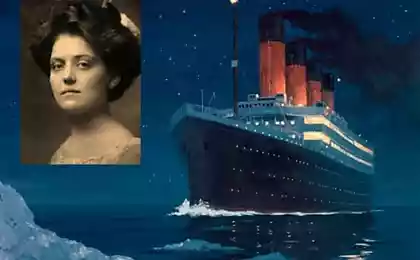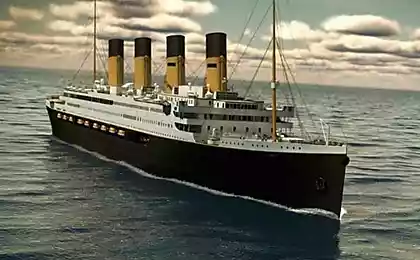1980
Titanic: Then and Now
"Titanic" was one of the world's largest passenger aircraft at the time of its construction. During the first flight April 14, 1912 collided with an iceberg and 2 hours 40 minutes sank in 2 hours 20 minutes the night of the following day. This disaster has become legendary and is still on the ear and causes a lot of debate. Just for her story filmed several feature films. Model bow. Nose in the fall to the bottom of the vessel is very well buried in the silt, which greatly disappointed the first researchers to inspect the scene after hitting the iceberg without special equipment was impossible. Torn hole in the body, which can be seen on the model, formed from the impact on the bottom.
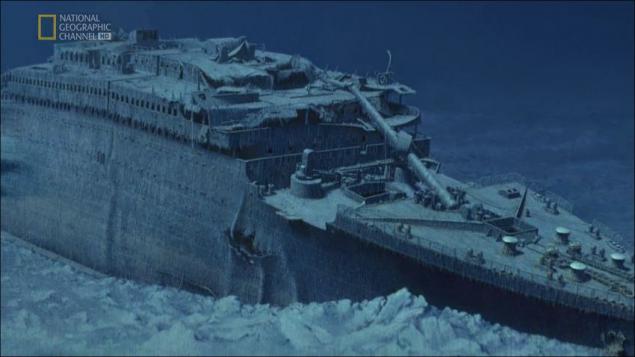
Titanic sank in the Atlantic at a depth of nearly 4 km. During diving vessel broke in two pieces, which now lie at the bottom of approximately six hundred meters apart. Around them are scattered a lot of debris and objects, including and a pretty big piece of Titanic's hull.
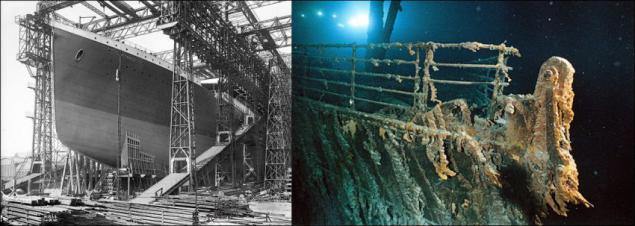
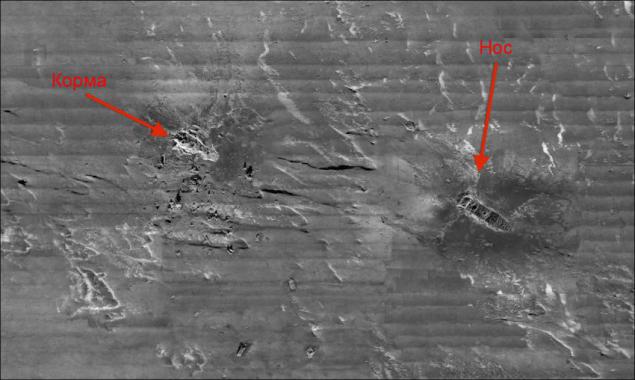
Map bow assembled from several hundred images. From left to right: just above the edge of the nose sticks spare anchor winch, it is for the mooring device, immediately followed by an open hatch into the hold №1, from which diverge to the sides of the line of the breakwater. Mezhnadstroechnoy On deck is a fallen mast, beneath are two hatches in the holds and winches for use with load. In front of the main superstructure it was once the bridge that collapsed during the fall to the bottom and now is now only a guess on specific details. Over the bridge is preserved superstructure cabin officers, Captain, radio room, and so on., Which crosses the crack formed on the site of the expansion joint. The gaping hole in the superstructure - the first place in the chimney. Just behind the superstructure can see another hole - it is a well, which was a staircase. Located to the left of something very torn - there was a second tube.

On the left can be seen towering over the spare anchor winch nose.
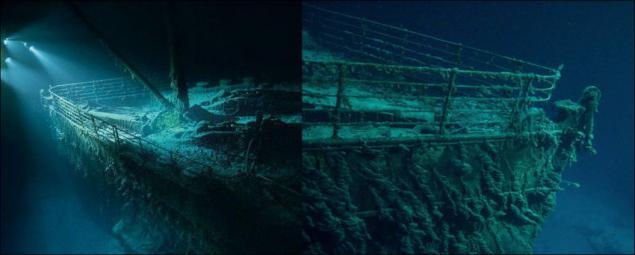
Main anchor the left side. Surprisingly, it does not fall down when hitting the bottom.
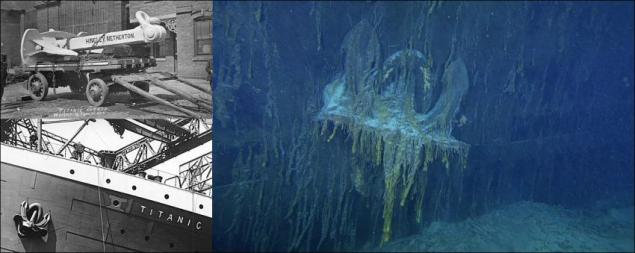
Spare anchor:
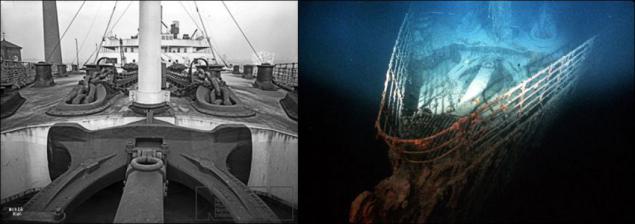
For spare anchor mooring system is:
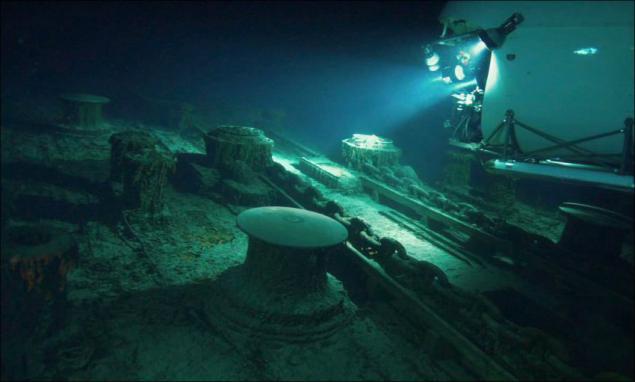
Open the hatch in the cargo hold №1. The lid flew off to the side, apparently, with the impact on the bottom.

On the mast used to be the remains of "crow's nest", where there were lookouts, but ten or twenty years ago, they have fallen off and is now down about the "crow's nest" recalls only the hole in the mast through which lookouts fell on a spiral staircase. Tail sticking out of the hole - fixing the ship's bell.
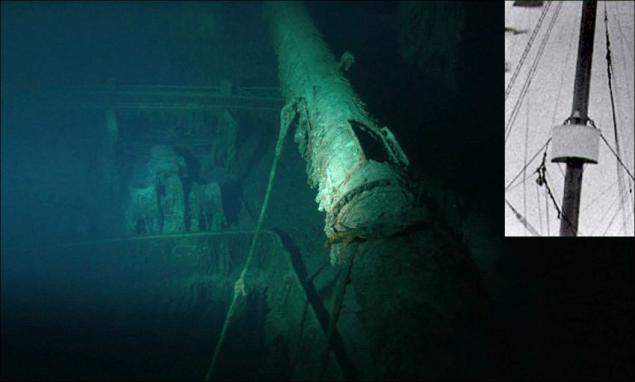
The ship's side:
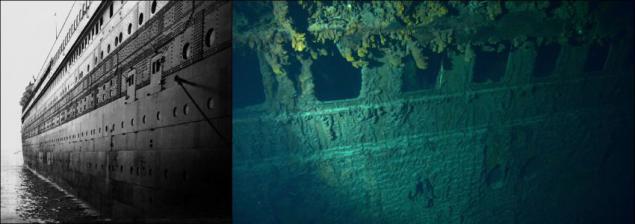
From the bridge there was only one of the steering wheels.
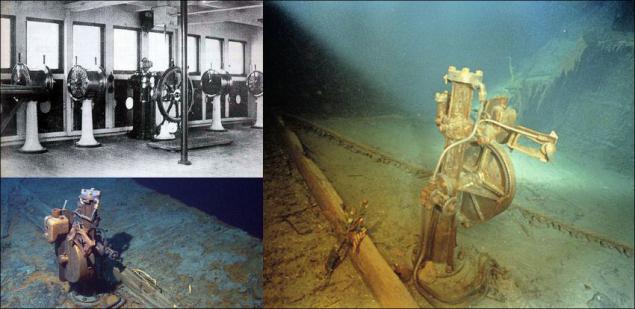
Boat deck. The add-on it in some places or uprooted or broken.
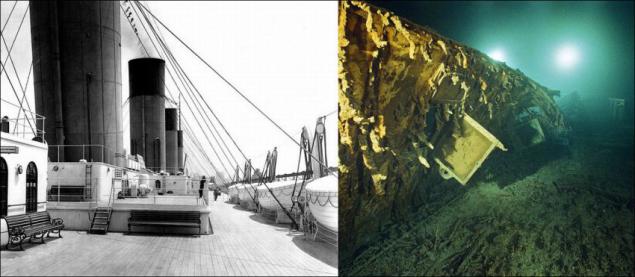
The surviving part of the superstructure in the front part of the deck. Bottom right - the entrance to the main staircase 1st class.

Surviving davits, bath cabin Captain Smith and the remains of the ship's whistle, which was installed on one of the pipes.
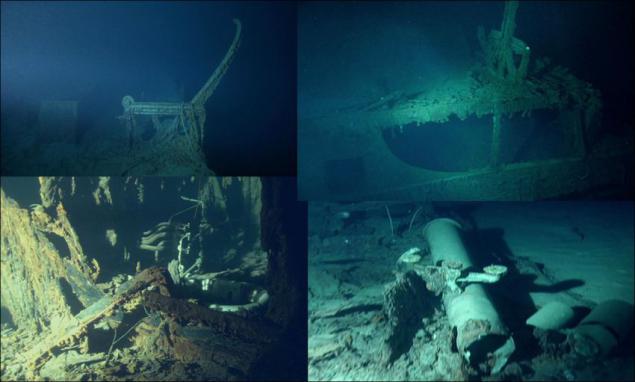
At the site of the main staircase is now a huge gaping pit. No trace of the stairs did not survive.
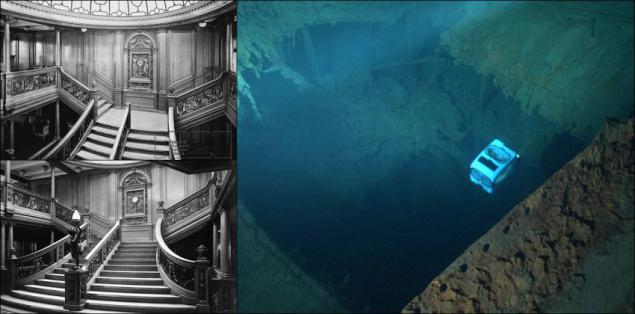
Stairway to 1912 .:
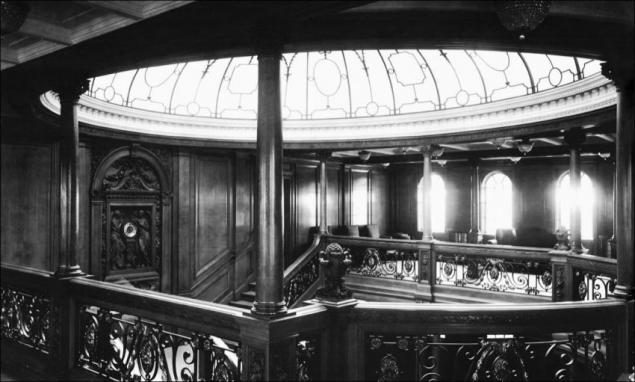
And the same view today. Looking at the previous photo is somehow hard to believe that this is the same place.

For staircase housed several elevators for passengers 1st class. They are kept separate elements. The inscription, illustrated below right, was placed in front of elevators and designated the deck. This inscription belonged deck A; bronze letter A has fallen off, but traces of it remain.

Hall 1st class on the deck D. This lower part of the grand staircase.
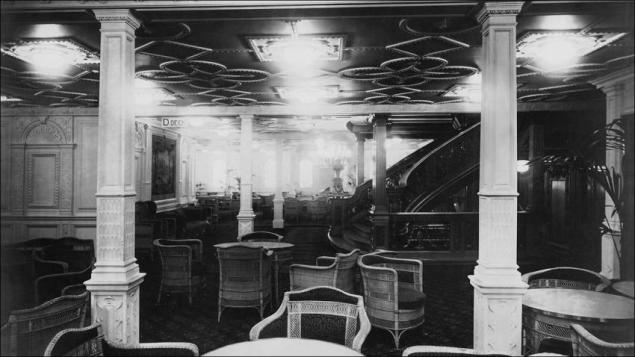
Although almost all the wood trim vessel have long been eaten by microorganisms, are some elements still exist.

The restaurant and lounge 1st class on the deck D was separated from the outside world large stained-glass windows, which have been preserved to this day.
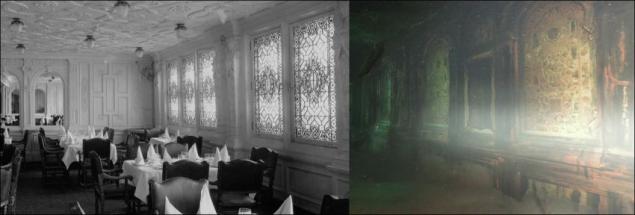
The remains of former beauty:
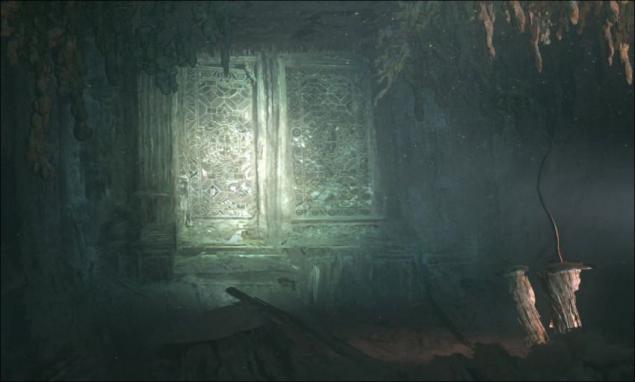
Outside the window guessed from the characteristic double portholes.
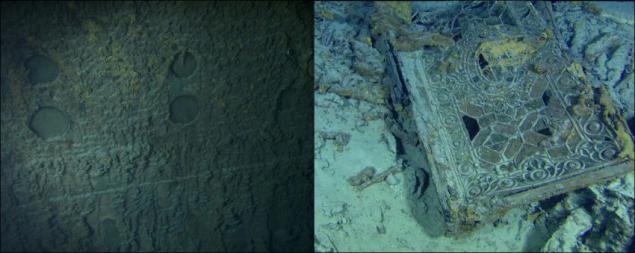
Elegant chandeliers and hang in place for over 100 years.

The once magnificent interiors cabins 1st class is now covered with debris and rubble. In some places you can find preserved pieces of furniture and objects.

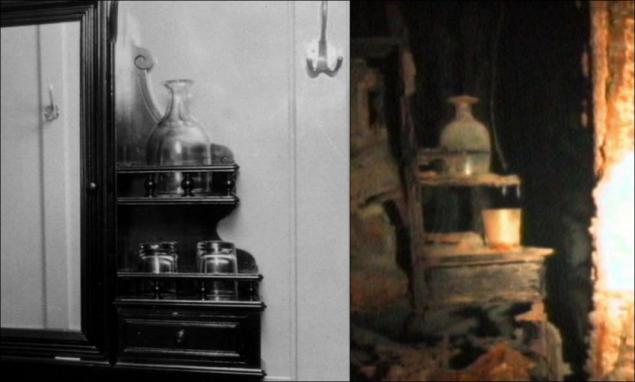
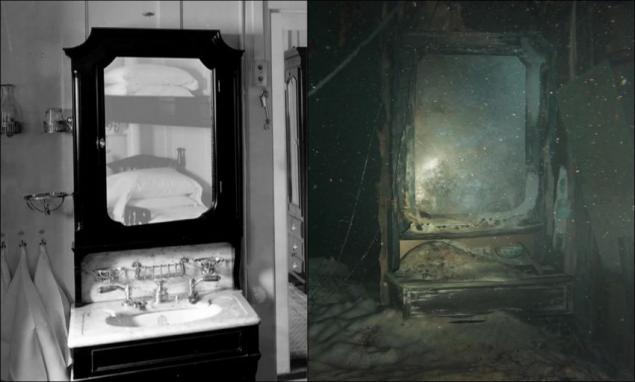
A little more detail. The door to the restaurant on the deck D and plaque designating the service door:
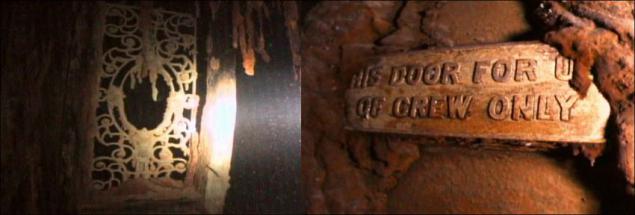
At the firemen had a "grand staircase". In order not to meet with the passengers from the cabins to the boiler firemen kept separate staircase.

On the ocean floor scattered hundreds of items, ranging from parts of the vessel and ending with the personal belongings of passengers.
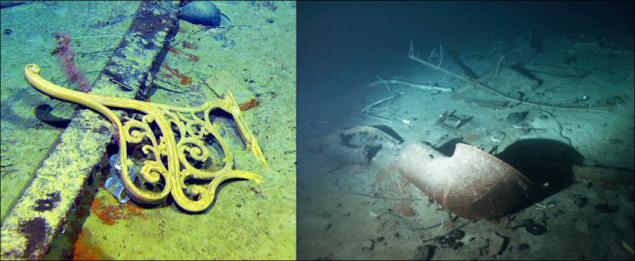
Some pairs of shoes lay in a very typical situation: for some it is a place became grave.
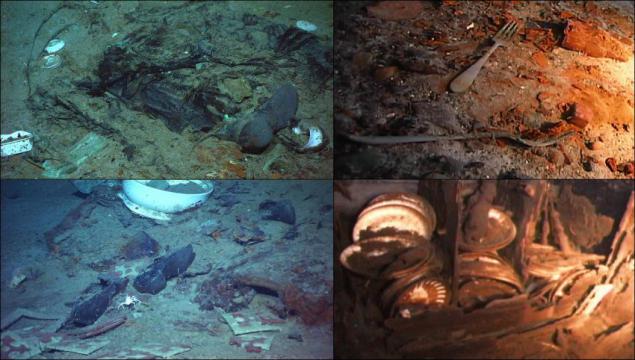
In addition to personal items and objects scattered on the bottom and large parts of skin, which also tried repeatedly to raise to the surface.
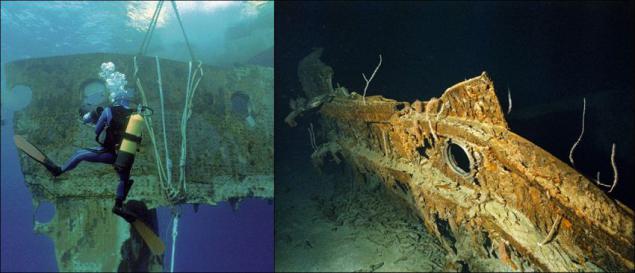
If the nose is preserved in more or less good condition, the aft part after falling down became a heap of metal. Starboard:
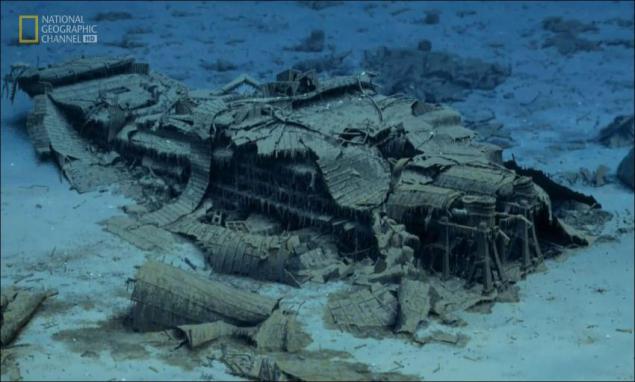
The left side:
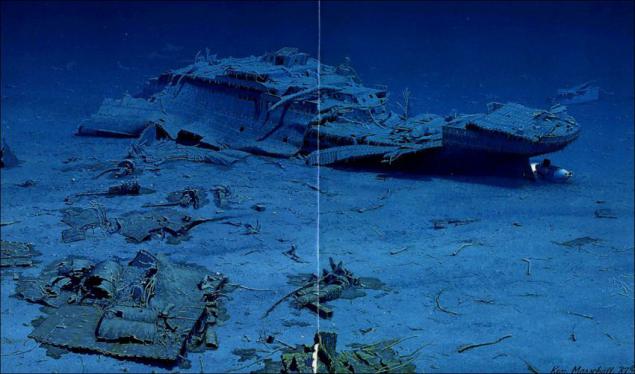
Feed:
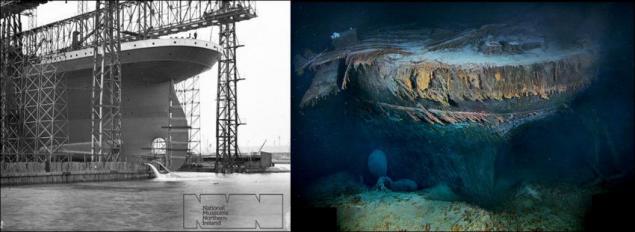
On the promenade deck of the 3rd class barely discern the individual details of the vessel.
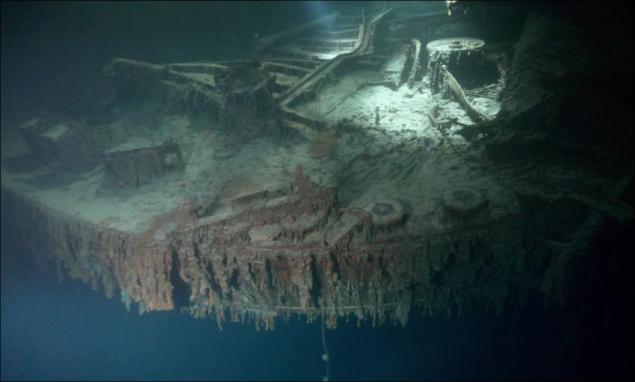
One of the three enormous propellers:
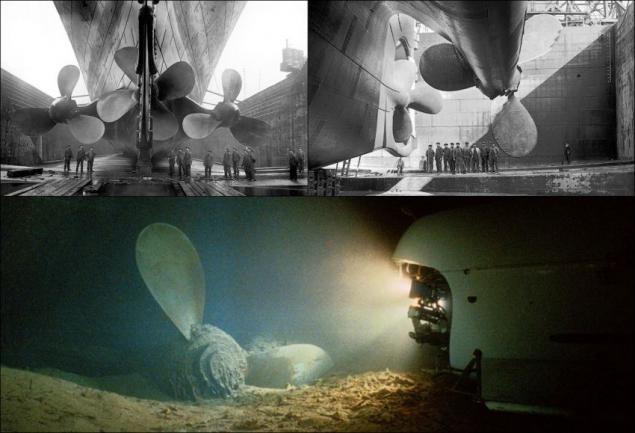
After breaking the ship in two parts at the bottom of spilled even steam boilers.
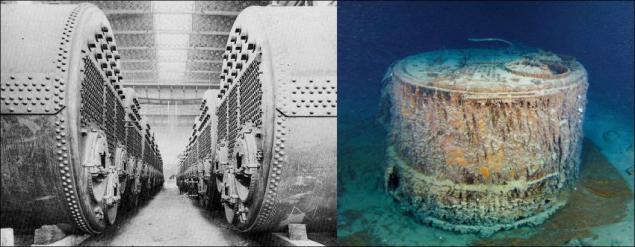
The breaking point was just the engine room and now these giants as tall as a three-storey house available eyes of researchers. The piston unit:

Both steam engines together:
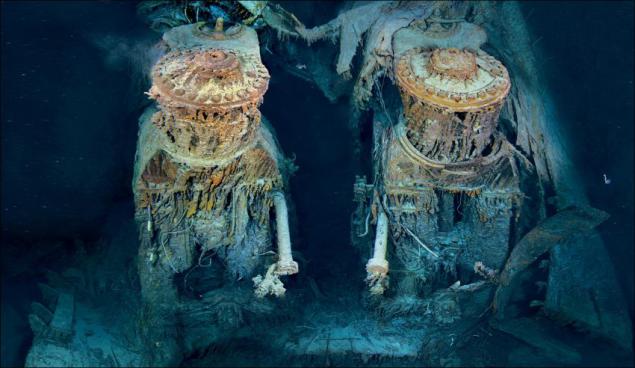
Dry Dock in Belfast, which was carried out final painting of the hull, still exists today as a museum exhibit.
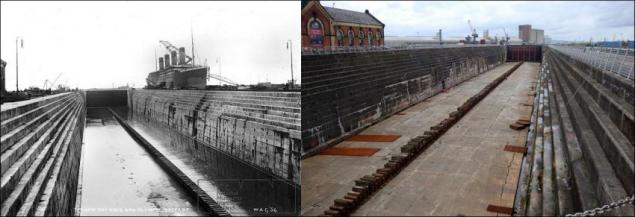
And so it would look like "Titanic" on the background of the biggest passenger liner modern «Allure of the Seas», commissioned in 2010
Comparison at a Glance:
- Displacement «Allure of the Seas» 4 times greater than that of "Titanic»;
- The length of a modern airliner of 360 m (100 m more than the Titanic);
- Maximum width of 60 m to 28, the "Titanic»;
- Draft about the same (about 10 m);
- Speed is also almost the same (22-23 nodes);
- The number of teams - 2, 1 thousand. People ("Titanic" was up to 900, many of whom were stokers);
- Seating capacity - up to 6, 4 ths. People (on the Titanic 2, 5 ths.).

Source: tov-tob.livejournal.com

Titanic sank in the Atlantic at a depth of nearly 4 km. During diving vessel broke in two pieces, which now lie at the bottom of approximately six hundred meters apart. Around them are scattered a lot of debris and objects, including and a pretty big piece of Titanic's hull.


Map bow assembled from several hundred images. From left to right: just above the edge of the nose sticks spare anchor winch, it is for the mooring device, immediately followed by an open hatch into the hold №1, from which diverge to the sides of the line of the breakwater. Mezhnadstroechnoy On deck is a fallen mast, beneath are two hatches in the holds and winches for use with load. In front of the main superstructure it was once the bridge that collapsed during the fall to the bottom and now is now only a guess on specific details. Over the bridge is preserved superstructure cabin officers, Captain, radio room, and so on., Which crosses the crack formed on the site of the expansion joint. The gaping hole in the superstructure - the first place in the chimney. Just behind the superstructure can see another hole - it is a well, which was a staircase. Located to the left of something very torn - there was a second tube.

On the left can be seen towering over the spare anchor winch nose.

Main anchor the left side. Surprisingly, it does not fall down when hitting the bottom.

Spare anchor:

For spare anchor mooring system is:

Open the hatch in the cargo hold №1. The lid flew off to the side, apparently, with the impact on the bottom.

On the mast used to be the remains of "crow's nest", where there were lookouts, but ten or twenty years ago, they have fallen off and is now down about the "crow's nest" recalls only the hole in the mast through which lookouts fell on a spiral staircase. Tail sticking out of the hole - fixing the ship's bell.

The ship's side:

From the bridge there was only one of the steering wheels.

Boat deck. The add-on it in some places or uprooted or broken.

The surviving part of the superstructure in the front part of the deck. Bottom right - the entrance to the main staircase 1st class.

Surviving davits, bath cabin Captain Smith and the remains of the ship's whistle, which was installed on one of the pipes.

At the site of the main staircase is now a huge gaping pit. No trace of the stairs did not survive.

Stairway to 1912 .:

And the same view today. Looking at the previous photo is somehow hard to believe that this is the same place.

For staircase housed several elevators for passengers 1st class. They are kept separate elements. The inscription, illustrated below right, was placed in front of elevators and designated the deck. This inscription belonged deck A; bronze letter A has fallen off, but traces of it remain.

Hall 1st class on the deck D. This lower part of the grand staircase.

Although almost all the wood trim vessel have long been eaten by microorganisms, are some elements still exist.

The restaurant and lounge 1st class on the deck D was separated from the outside world large stained-glass windows, which have been preserved to this day.

The remains of former beauty:

Outside the window guessed from the characteristic double portholes.

Elegant chandeliers and hang in place for over 100 years.

The once magnificent interiors cabins 1st class is now covered with debris and rubble. In some places you can find preserved pieces of furniture and objects.



A little more detail. The door to the restaurant on the deck D and plaque designating the service door:

At the firemen had a "grand staircase". In order not to meet with the passengers from the cabins to the boiler firemen kept separate staircase.

On the ocean floor scattered hundreds of items, ranging from parts of the vessel and ending with the personal belongings of passengers.

Some pairs of shoes lay in a very typical situation: for some it is a place became grave.

In addition to personal items and objects scattered on the bottom and large parts of skin, which also tried repeatedly to raise to the surface.

If the nose is preserved in more or less good condition, the aft part after falling down became a heap of metal. Starboard:

The left side:

Feed:

On the promenade deck of the 3rd class barely discern the individual details of the vessel.

One of the three enormous propellers:

After breaking the ship in two parts at the bottom of spilled even steam boilers.

The breaking point was just the engine room and now these giants as tall as a three-storey house available eyes of researchers. The piston unit:

Both steam engines together:

Dry Dock in Belfast, which was carried out final painting of the hull, still exists today as a museum exhibit.

And so it would look like "Titanic" on the background of the biggest passenger liner modern «Allure of the Seas», commissioned in 2010
Comparison at a Glance:
- Displacement «Allure of the Seas» 4 times greater than that of "Titanic»;
- The length of a modern airliner of 360 m (100 m more than the Titanic);
- Maximum width of 60 m to 28, the "Titanic»;
- Draft about the same (about 10 m);
- Speed is also almost the same (22-23 nodes);
- The number of teams - 2, 1 thousand. People ("Titanic" was up to 900, many of whom were stokers);
- Seating capacity - up to 6, 4 ths. People (on the Titanic 2, 5 ths.).

Source: tov-tob.livejournal.com
